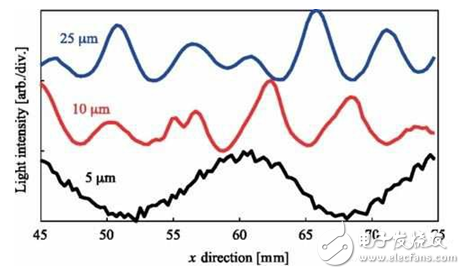As the global rare earth metal market is almost monopolized by China, the number of other countries is limited, and the demand exceeds supply. Japanese researchers have been looking for ways to replace the global rare earth metal control liquid crystal display (LCD). The result of the study was that the research team switched to directional ultrasound based on sound field to control the liquid crystal instead of using rare indium tin oxide (ITO) to make an electric field to control the LCD pixel. In the journal Applied Physics Letters, researchers published a paper entitled "Control of liquid crystal molecular orienta TIon using ultrasound vibraTIon", which emphasizes Switching the electric field to the sound field controls the pixels without moving the components and without using the rare earth metal, indium. “We proposed a technique that uses ultrasonic to control the nematic liquid crystal orientation and explore the optical properties of these directional samples,†the researchers noted. “We made ultra-sonic liquid crystal cells with a thickness of about 5 to 25 microns. And 2 ultrasonic lead zirconate titanate transducers." The researchers showed through the prototype of the ultrasonic liquid crystal cell that the sound field is as easy to control as the electric field or magnetic field. The ultrasonic transducer utilizes the "flexural vibration mode" of the liquid crystal cell. Since the acoustic radiation forces the liquid crystal layer to change the molecular orientation, the characteristics of the optical transmission capability are changed. The researchers adjusted the frequency and voltage of the ultrasonic drive to change the spatial distribution of the liquid crystal molecules, thereby controlling the intensity distribution of the emitted light. The mechanism used is to change the thickness of the liquid crystal by ultrasonic waves. "To this end, we propose a technique for controlling the orientation of liquid crystal molecules using ultrasonic vibration," the researchers noted. "With the use of a sound field instead of an electric or magnetic field, there is no need to use an ITO electrode." In fact, liquid crystals are a state of between liquid and solid that is composed of extended anisotropy (having different properties in the x, y, and/or z planes, respectively). The liquid crystal is usually controlled by an electric field or a magnetic field, and a coupling is made at each pixel unit position. The most common type uses ITO film sputtered on top of a liquid crystal-limited glass plate, but this approach is not only expensive, time consuming, but also attenuates the source as the source must pass through the ITO. On the other hand, the ultrasonic wave does not impair the light transmission, and can be controlled by simply focusing the lens deformation in a manner similar to a human eye crystal. According to the researchers, the result is that the acoustic wave can be adjusted to a resonant mode, so that the glass substrate can change the molecular orientation of the restricted liquid crystal and its light transmission intensity. The optical transmission intensity distribution of the liquid crystal layer can be acoustically adjusted by changing the 5 micron thickness (black) to 10 micrometers (red) and 25 micrometers (blue) of the prototype. Ultrasonic liquid crystal cells are coated with a polyimide film oriented on the outside of two glass plate sandwiches (120 and 50-by-5-by-0.7), between 2 glass plates and with 5, 10 or 25 micron epoxy edges The droplets act as spacer layers. An ultrasonic superconducting piezoelectric zirconate titanate (PZT) transducer is used to polarize the thickness direction from the opposite edge of the liquid crystal interlayer between the glass sheets. The PZT transducer produces a continuous sinusoidal standing wave across the glass, resulting in vibration of the directional liquid crystal. The researchers found that there are many different resonant frequencies that can affect the acoustically excited LCD, most of which are between 59 and 189 kHz. The acoustic signal directly affects the thickness of the liquid crystal layer, resulting in flexible vibration and optical transmission of the substrate. Change. Researchers say that the ultrasonic deflection of the glass substrate is expected to control the orientation of the nematic liquid crystal molecules, thereby precisely controlling the thickness of the liquid crystal and the intensity of light transmission. High temperature thermocouple slip ring with German and Japanese imports of key materials, can be used in high temperature environment rotate 360 degrees to transmit current and thermocouple signal, can be long-term stability in 100 ~ 250 ℃ high temperature environment, it is mainly used for hot roller, the high temperature environment, such as heating device, suffered long-term complex field practice test, transmission performance is stable and the quality. High Temperature Slip Ring,Taidacent Slip Ring,Slip Ring Capsule,Fiber Brush Slip Ring Dongguan Oubaibo Technology Co., Ltd. , https://www.sliprobo.com
